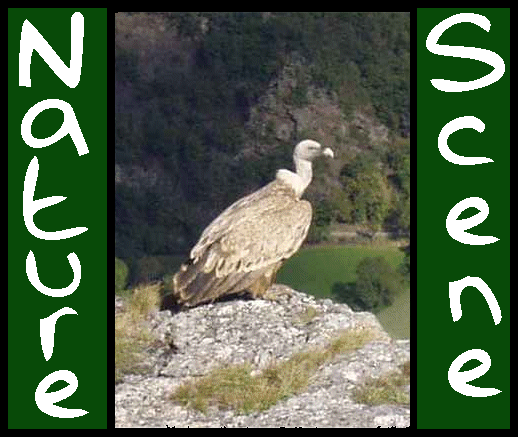
Welcome to NATURESCENE'S
BOTANY ARTICLES of the CÉVENNES
A selection of articles in French and English by David Dickenson of Naturescene, written for the official ALEPE site

| We were a group of seven to welcome in the autumn this Sunday, with a programme to really whet the appetite. We wanted to see the very last orchids of the year, and after that, to punish ourselves by climbing the steep footpath of the Mazel to the limestone plateau of the Causse Méjean, in order to delight ourselves with the autumn colours. |
| Chemin des Vignes (Vinyard Lane) | |
| What better spot to see the Autumn Lady's Tresses (Spiranthes spiralis)(Photo 1) than my Chemin des Vignes
at La Salle Prunet? This year, the path is scattered with 160 white spikes of flowers, all arranged in spirals,
each with a fringed lip and green throat.
Two days after this outing, a herd of sheep passed up this path, and significantly did no damage at all as they passed over the orchids. This orchid is found exclusively in those spots that are well trampled. It could resist the ox-carts used for the grape harvest, and today can resist the feet of eager botanists. The flower stalk is supple and very strong, and the rosette of leaves has scarcely left the soil. After flowering, the leaves will grow and persist just until the first period of drought in the summer of 2011. |
|
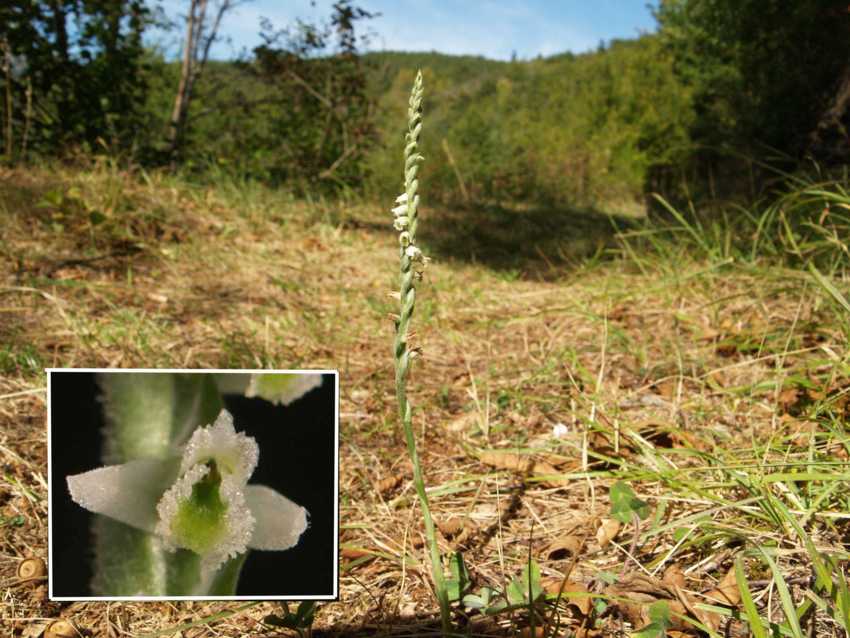
Photo 1 |
| Somewhat suspiciously, we ate several bunches of grapes(Vitis vinifera)(photo 2,)perhaps Clinton variety, which was banned decades ago. These decorated the bancels (terraces), and were a relic from the former vinyards. | We came across some Wild madder (Rubia peragrina) (Photo 3). The French name it the Garance voyageuse, as the seeds stick to you and make their travels. I really enjoy the botanical revue named after this plant, which equally sticks to your mind after reading. |
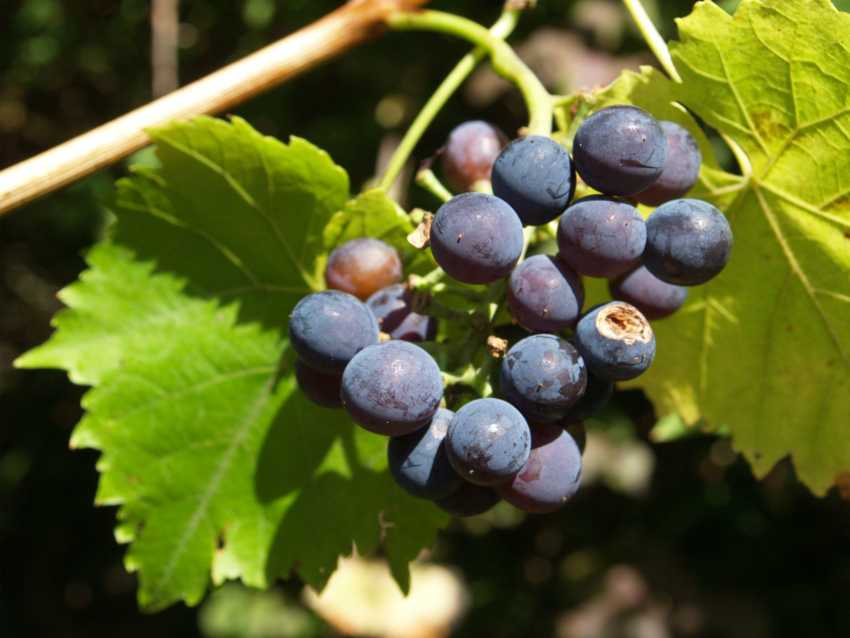
Photo 2 |
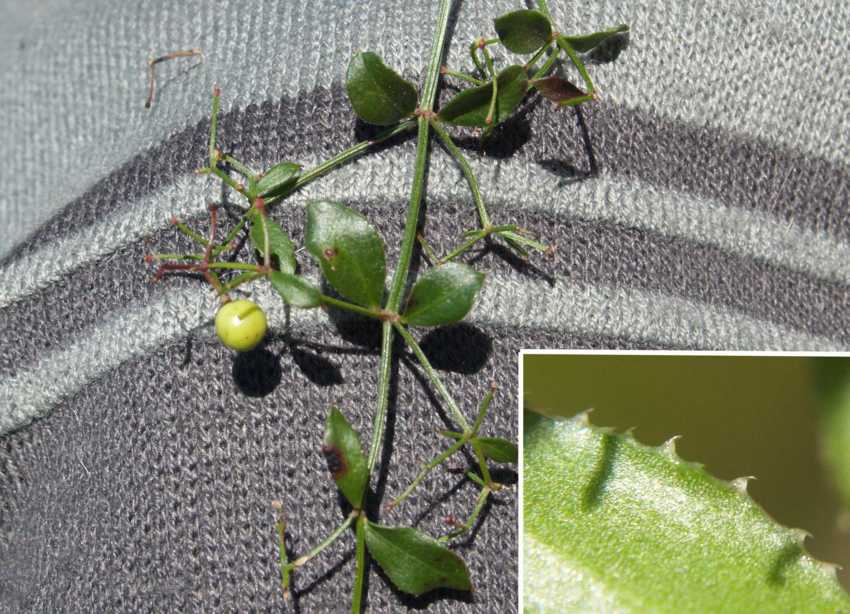
Photo 3 |
|
The most striking plant was the Livelong Orpine (Sedum telephium) (photo 4). This is the by far the
largest of the stonecrops, and in our region, this subspecies 'maximum' typically has yellow flower heads.
A week previously, all the leaves really had the appearance of being completely dead, but 24 hours after the first rain, they had rapidly swollen up, and became as fleshy as any other stonecrop leaves. Within 3 days, the flower buds had burst open to decorate the path. |
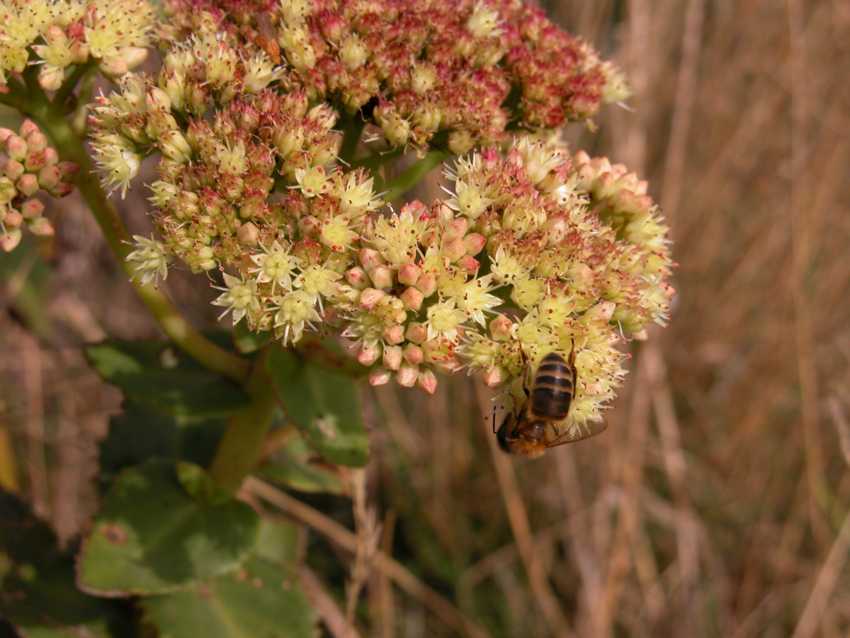
Photo 4 |
| The Footpath of Le Mazel | |
| After a break for tea and cakes (English, of course), we took the footpath from Le Mazel.
We had a pleasant surprise. There are usually several Autmn Lady's Tresses on the horizontal path between the pastures,
but I had not been expecting to see any on the path that climbed the cliff face. But they were everywhere!
Several hundred of these little orchids spotted the path and the surrounding pastures. We took our picnic encircled by several dozens. They were still growing up to 820m. Thirty paces on, and the limestone pasture changed to the dolomite rocks (a form of magnesium rich limestone)(photo 5). The slope became steeper. Was the climate too harsh above this, or was the terrain just not suitable? That is to find out. |
|
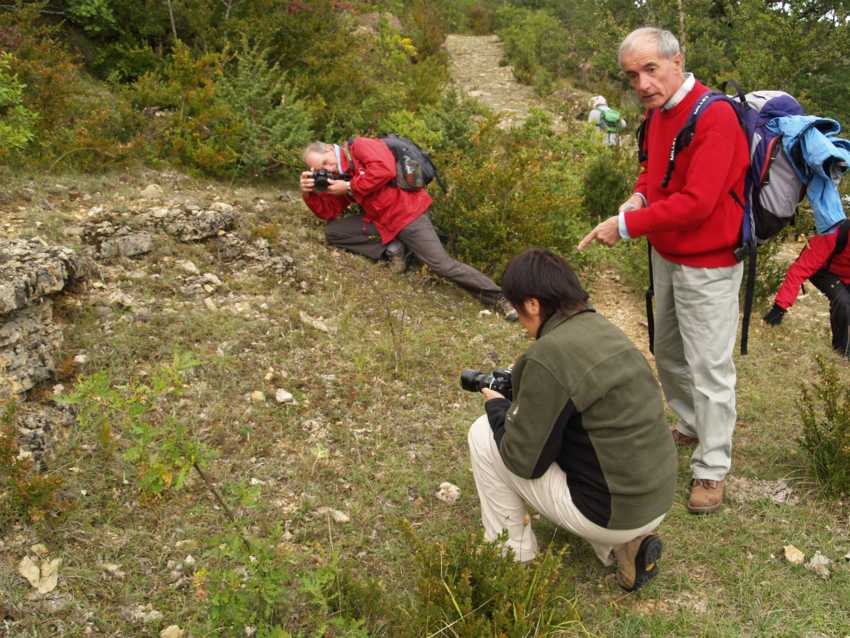
Photo 5 |
| The climb didn't seem as difficult as our last visit. The day was cool and distinctly autumnal. Amongst the most interesting fruits, we admired the Large-fruited Alison (Hormatophylla macrocarpa) (photo 6), resembling the pods of Honesty, but smaller and heart-shaped, and the shiny white seeds of Gromwell (Lithospermum officionale) (photo 7). Litho=rock, spermum=seed, and it was well named. |
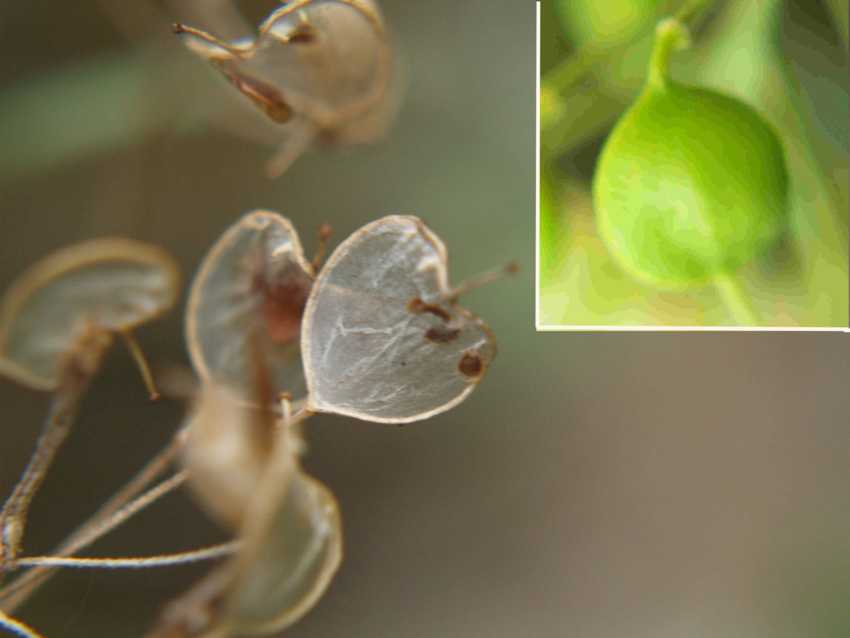
Photo 6 |
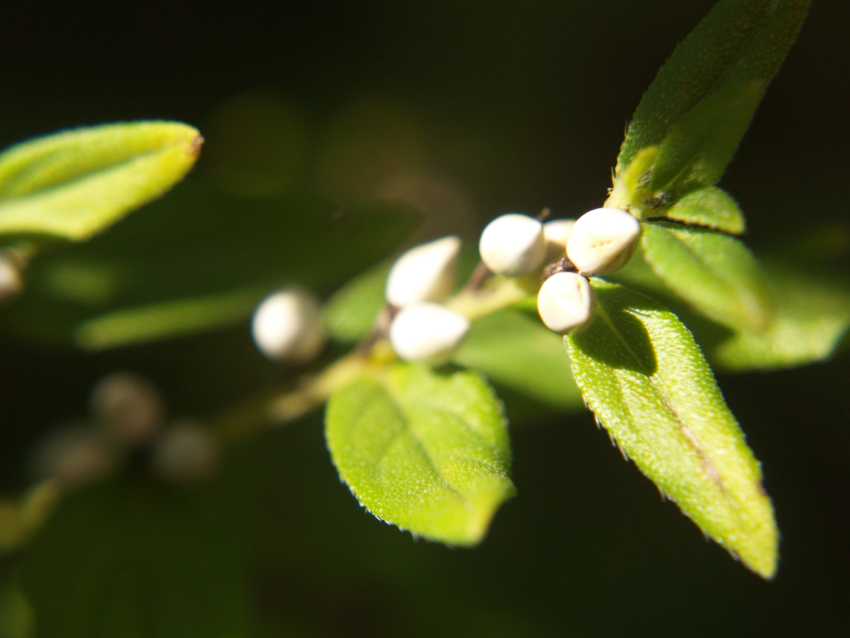
Photo 7 |
| And what about our dog on this walk? She had lapped up all the stroking she could whilst we puffed uphill, and spent the descent seeking out all the spots where her two-legged companions had previously spent their pennies. |
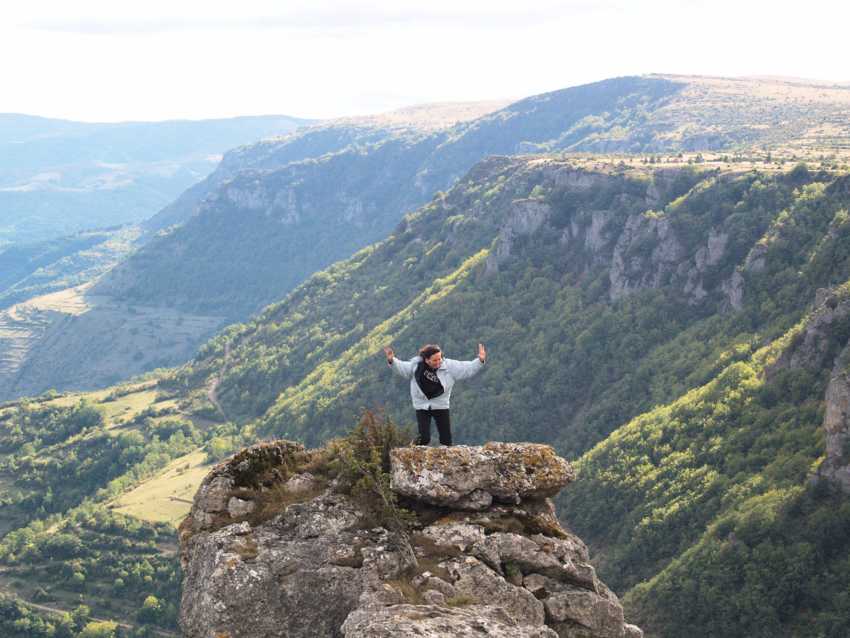
Photo 8 |
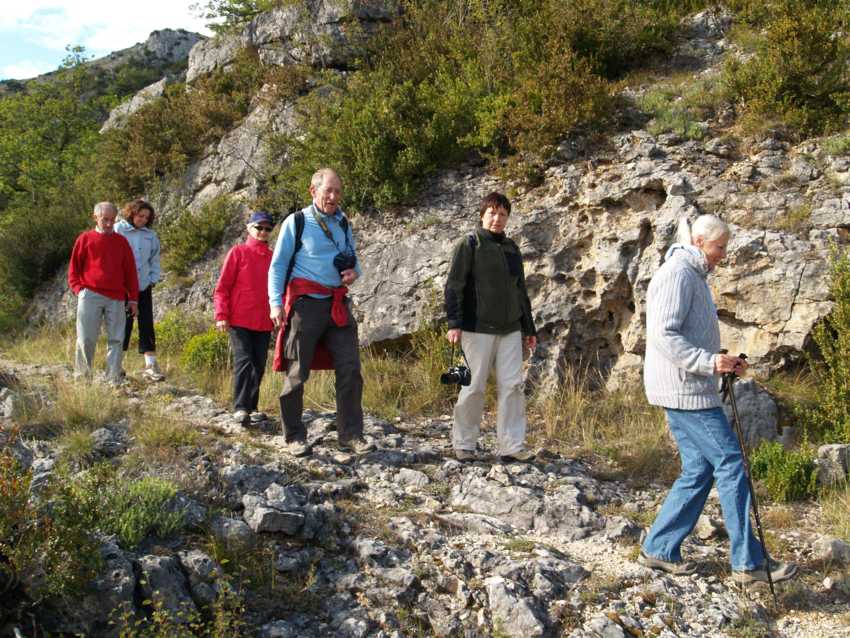
Photo 9 |